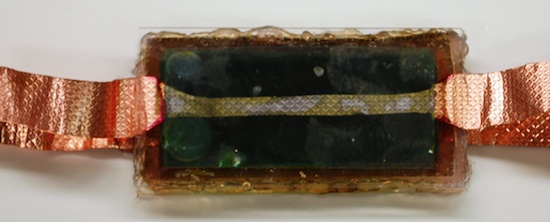Not Just for Popeye: Spinach Protein Boosts Solar Cell Power
Spinach is apparently good for more than just growing hilariously oversized cartoon muscles. A team at Vanderbilt University has used a protein found in the light-loving leafy green to boost the electrical output from photovoltaic power cells. A study released today in the journal Advanced Materials found that by combining silicon solar cells with the photosynthesis protein Photosystem 1 (PS1), they could achieve improvements in both the current and voltage produced by traditional solar cells.
PS1 is a nearly perfect protein for transforming sunlight into energy, making the conversion at almost 100% efficiency. It’s also cheap and readily available. The protein is found not only in spinach, which most people will know as “that thing in that field greens salad you’re going to have for lunch to justify eating a pint of ice cream for dinner,” but in other plants, including the invasive vine kudzu, which could conceivably start pulling its weight around here for once if the technology pans out.
The silicon researchers worked with has been “doped” to react particularly well with PS1, carrying a positive charge that helps the resulting solar cell work more than twice as efficiently as previous biohybrid cells. The next step in what is sure to be a long development process is a larger prototype panel of the cells that could be used to power small electronics
(via PhysOrg, image courtesy of Vanderbilt University)
- This could give our solar windows an awesome greenish tint
- There is no bad way to use an ion cannon, but making solar panels is a real good one
- Still, it would be nice to have cheaper materials than silicon in solar panels
Have a tip we should know? tips@themarysue.com
